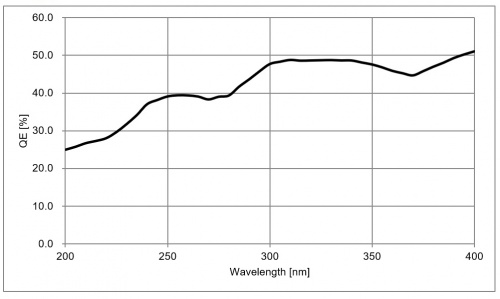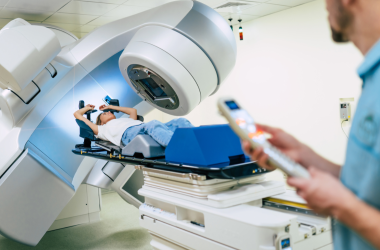Last Updated on: 21st April 2024, 06:56 pm
Expanding its xiLAB initiative, XIMEA has introduced the MX081 models to its ultraviolet camera offerings.
Today’s cameras are not just about capturing what’s visible; they delve into deeper parts of the electromagnetic spectrum, revealing data previously inaccessible to the human eye. UV cameras are at the forefront of this exploration, capturing ultraviolet light which is invisible yet informative across various fields including forensic science and astronomy.
These cameras are designed with specialized sensors or filters to detect UV light, equipped with features that filter out non-UV wavelengths to ensure purity in the images captured.
The MX081 model incorporates the renowned Sony IMX487 sensor, acclaimed for its high-quality imaging, minimal noise, and enhanced sensitivity. It consistently delivers superior performance in various challenging conditions. Its ability to capture a wide spectral range from 200 to 400 nm allows for precise detection of UV-induced changes in materials, enhancing both analysis and visualization.
With an 8.1 megapixel resolution and a frame rate of 59 FPS, the MX081 camera ensures high-resolution, sharp images and smooth capture of movements. Its small form factor (26 x 26 millimeters) adds to its adaptability across different applications including aerial drones, portable devices, and scientific equipment.
The utility of UV cameras spans several specialized fields and different UV wavelength needs such as UVA (315-400 nm), UVB (280-315 nm), and UVC (100-280 nm):
- Forensics and Crime Scene Analysis: UV Wavelengths Required: 250-400 nm (UVA)
- Detection of bodily fluids, stains, and trace evidence that fluoresce under UV light
- Identifying hidden bloodstains, fingerprints, and other substances at crime scenes
- Differentiating between authentic and counterfeit documents
- Material Inspection and Quality Control: UV Wavelengths Required: 200-400 nm (UVC, UVB, UVA)
- Detecting cracks, defects, and contaminants in materials such as metals, glass, and plastics
- Identifying counterfeit currency, documents, and products
- Inspecting electronic components for flaws and irregularities
- Biological and Medical Research: UV Wavelengths Required: 260-350 nm (UVC, UVB)
- Studying DNA, proteins, and other biomolecules that fluoresce under UV light
- Analyzing cell structures, gene expression, and protein interactions
- Diagnosing skin disorders, detecting fungal infections, and identifying biological samples
- Art Restoration and Conservation: UV Wavelengths Required: 300-400 nm (UVA)
- Revealing hidden underdrawings, retouching, and alterations in paintings and historical artifacts
- Identifying aged varnishes, repairs, and surface inconsistencies in artworks
- Environmental Studies: UV Wavelengths Required: 300-400 nm (UVA)
- Monitoring air and water quality by detecting pollutants and contaminants that fluoresce
- Studying plant health, stress responses, and ecosystem dynamics
- Entomology and Pest Control: UV Wavelengths Required: 300-400 nm (UVA)
- Attracting insects and pests that are sensitive to UV light, aiding in their identification and control
- Monitoring and studying insect behavior, population dynamics, and disease transmission
- Photolithography and Semiconductor Manufacturing: UV Wavelengths Required: 200-400 nm (UVC, UVB, UVA)
- Enabling precise and intricate patterning of semiconductor wafers in photolithography processes
- Fabricating microchips, integrated circuits, and other semiconductor devices
Main specifications of the new MX081 model: MX081UG-SY-X2G2 | 8.1 Mpix, 2856 x 2848 pixels, 2.74 μm pixel size, 2/3″, Sony IMX487 sensor and PCIe or USB3








